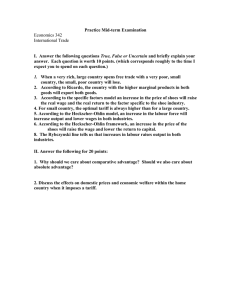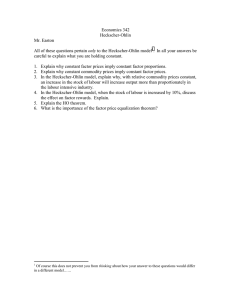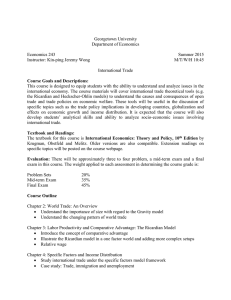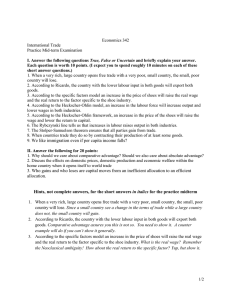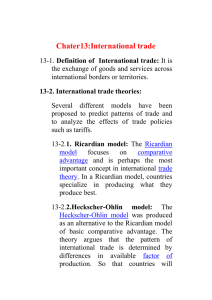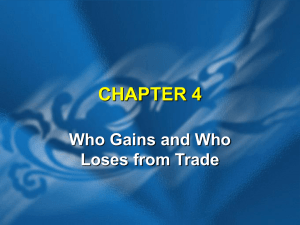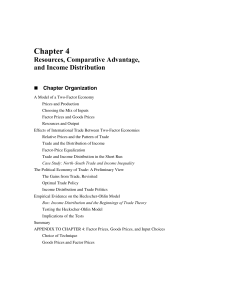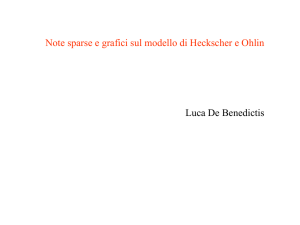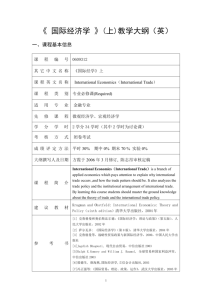ECO 441 Study Questions Answer the following. Some questions
advertisement
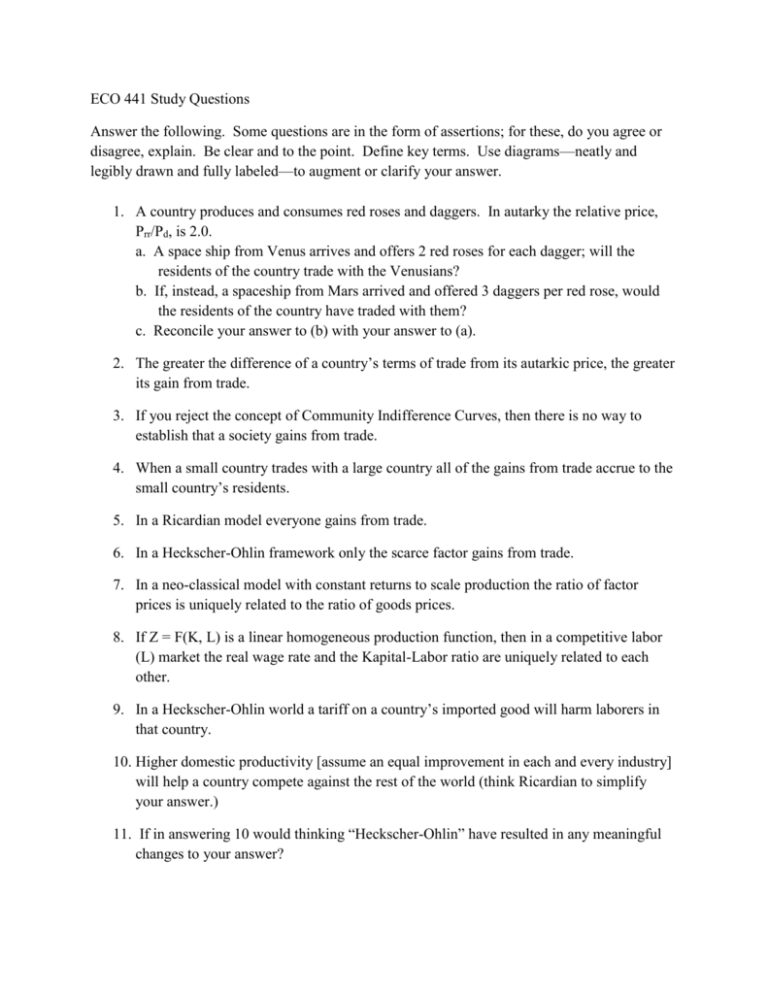
ECO 441 Study Questions Answer the following. Some questions are in the form of assertions; for these, do you agree or disagree, explain. Be clear and to the point. Define key terms. Use diagrams—neatly and legibly drawn and fully labeled—to augment or clarify your answer. 1. A country produces and consumes red roses and daggers. In autarky the relative price, Prr/Pd, is 2.0. a. A space ship from Venus arrives and offers 2 red roses for each dagger; will the residents of the country trade with the Venusians? b. If, instead, a spaceship from Mars arrived and offered 3 daggers per red rose, would the residents of the country have traded with them? c. Reconcile your answer to (b) with your answer to (a). 2. The greater the difference of a country’s terms of trade from its autarkic price, the greater its gain from trade. 3. If you reject the concept of Community Indifference Curves, then there is no way to establish that a society gains from trade. 4. When a small country trades with a large country all of the gains from trade accrue to the small country’s residents. 5. In a Ricardian model everyone gains from trade. 6. In a Heckscher-Ohlin framework only the scarce factor gains from trade. 7. In a neo-classical model with constant returns to scale production the ratio of factor prices is uniquely related to the ratio of goods prices. 8. If Z = F(K, L) is a linear homogeneous production function, then in a competitive labor (L) market the real wage rate and the Kapital-Labor ratio are uniquely related to each other. 9. In a Heckscher-Ohlin world a tariff on a country’s imported good will harm laborers in that country. 10. Higher domestic productivity [assume an equal improvement in each and every industry] will help a country compete against the rest of the world (think Ricardian to simplify your answer.) 11. If in answering 10 would thinking “Heckscher-Ohlin” have resulted in any meaningful changes to your answer? 12. It is difficult, if not impossible, for an industrialized country to compete with a low wage country. 13. If production is linearly homogeneous then production possibility curves will be bowed out, provided that XX is true. Do you agree and what is XX? 14. Prove Rybczynski’s theorem using the parallelogram diagram. How is Rybczynski’s theorem related to the shape of a country’s PPC? 15. Prove Rybczynski’s theorem using an Edgeworth-Bowley box diagram. 16. Competitive international trade maximizes (subject to the underlying “primitives,” such as tastes, endowments, and technologies) a country’s real GDP. 17. Given the level of factor prices, a non-competitive foreign exchange rate can lead to a failure of comparative advantage to explain trade patterns. 18. The offer curve for a Ricardian country will have a straight line segment equal to the length of the horizontal (“Z”) axis of the country’s PPC. 19. If a country opens up to trade, but in the short-run cannot alter its production mix, the residents of the country in general cannot in the short-run become better off. 20. Absolute advantage determines a country’s standard of living; comparative advantage determines the country’s trade patterns. 21. If a country grows because of technological improvements, its trading partners will share some of the increase in the standard of living, and, if the trading partner is small it will gain much of the increased standard of living. 22. Free trade will equalize the level of wages between American chemical engineers and Indian farmers. 23. In a Heckscher-Ohlin world the migration of labor between countries will have exactly the same effect on wages as unfettered free trade. 24. The NAFTA agreement between the large-economy USA and the medium-sizedeconomy Mexico could have been predicted to have had a modest impact on the US economy and significant (and, therefore, disruptive) impact on the Mexican economy. [This requires at least a 2-step answer] 25. The proof of factor-price equalization rests crucially on the determination of real wages solely by the K/L ratios in each industry (given LHPFs). 26. In factor price equalization, given the assumption that the overall K/L ratio for the country is fixed, a crucial intermediate step is that an increase in, say, the relative price of the labor-intensive good, leads to an increase in the K/L ratio within each of the two industries. 27. Suppose the factor intensities in the two industries are identical, i.e., ky = kz for any common w/r ratio. What will the efficiency locus in the production Edgeworth-Bowley box look like?—what will the production possibilities curve look like?—what will Heckscher-Ohlin predict regarding the pattern of trade? [Assume LHPFs.] 28. What are the “magnification effects”? Where are they found? How do they come about? 29. more to come, perhaps……………
